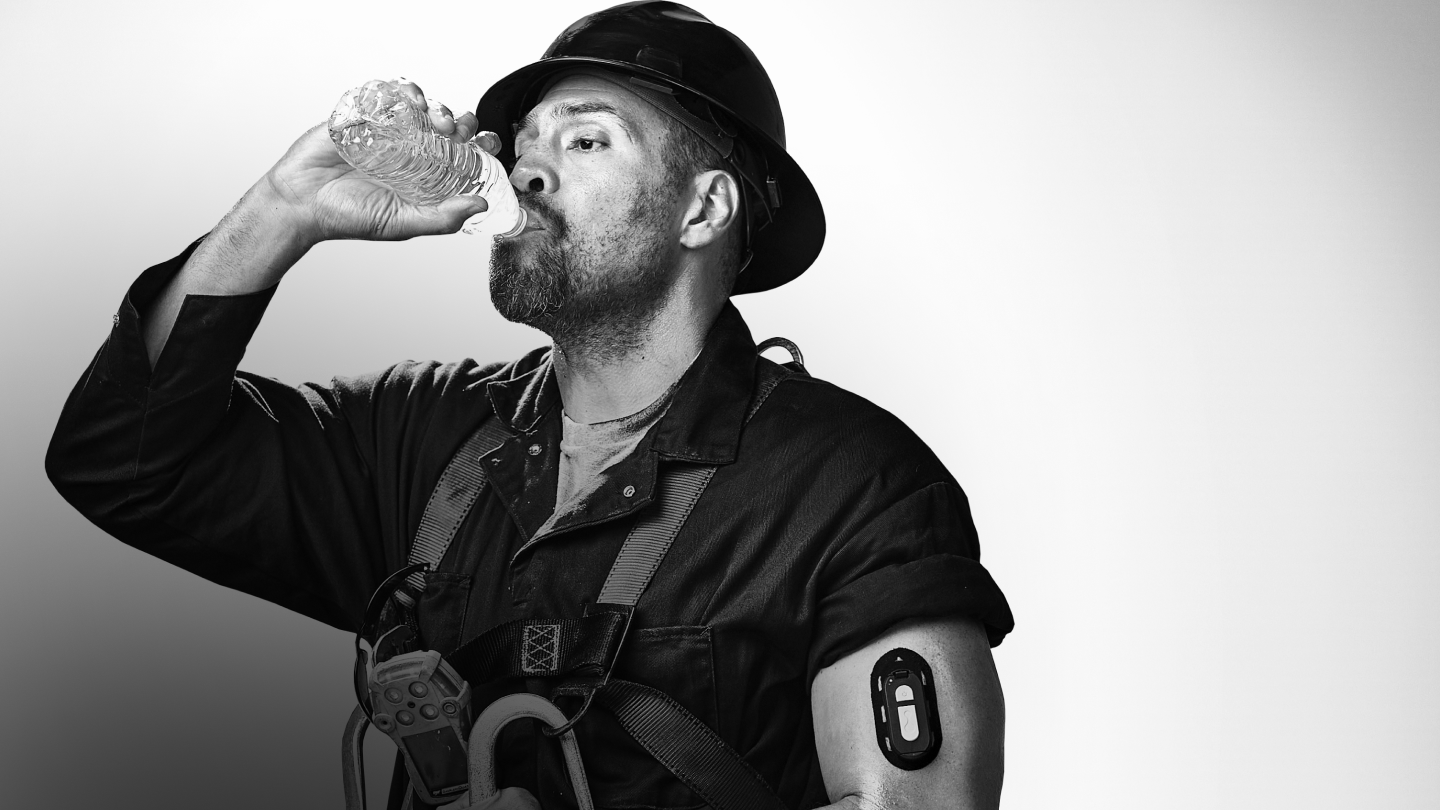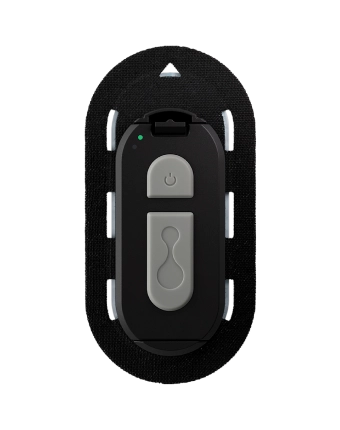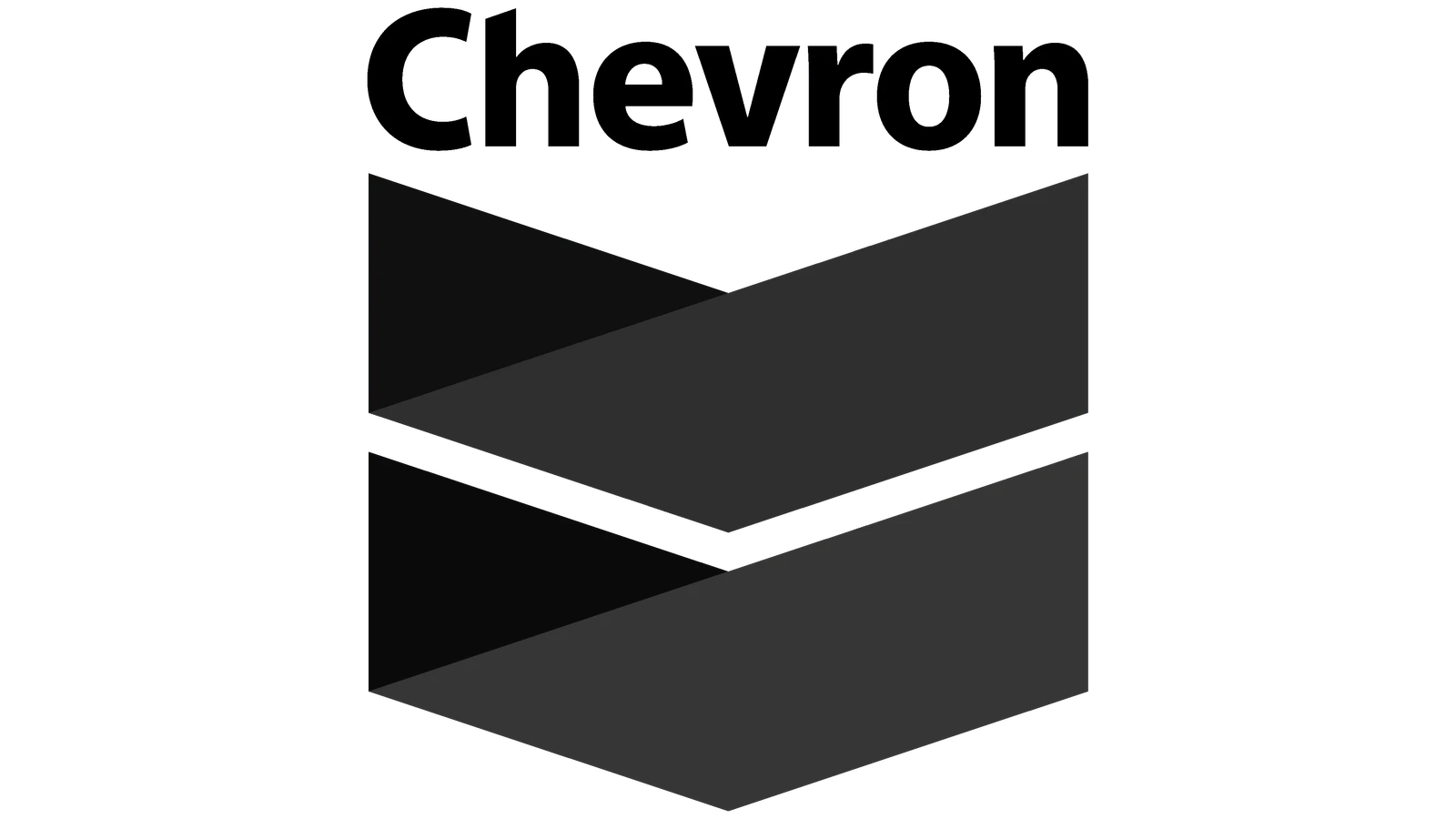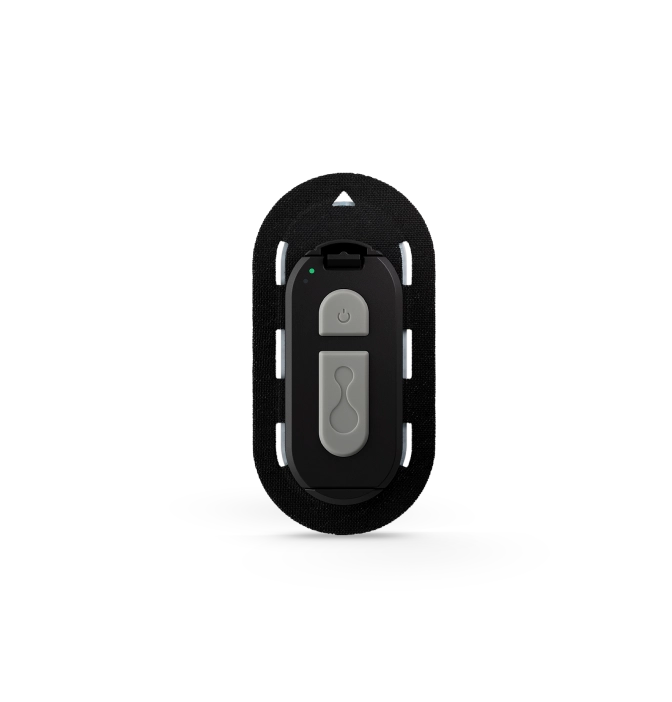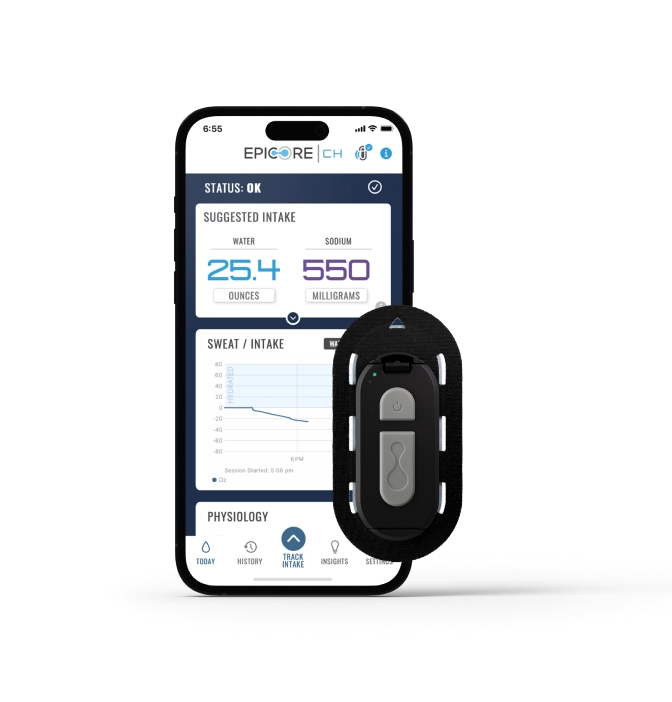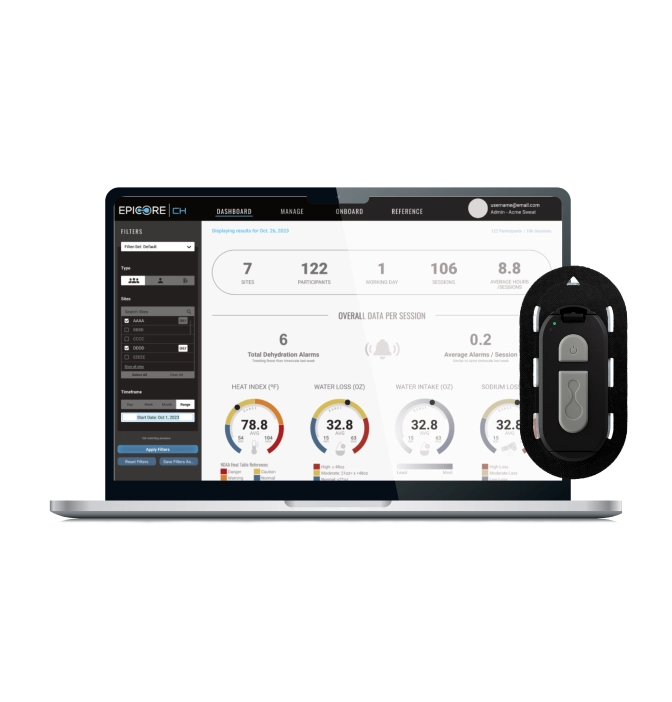The Problem
Industrial athletes operate in increasingly dangerous conditions
Excessive heat exposure can lead to impaired cognition and performance deficits, which pose risks to workers and those around them.
91°F
.
Temperature deemed unsafe for laborers, while protective gear and humidity only increase the risk.
19
.
Consecutive years of elevated temperatures across the United States.
40x
.
More heat-related injuries happen than are reported annually.
The Solution
Connected Hydration empowers workers to combat the effects of fluid/electrolyte losses and fatigue by providing personalized feedback and interventions.
.
Elevated Awareness
Our Smart Wearable, worn on the arm, teaches workers how to proactively hydrate based on their measured sweat loss, electrolyte loss, skin temperature, and motion.

.
Improved Safety & Wellbeing
Workers receive fluid and electrolyte suggestions in real-time to provide immediate feedback on how to rehydrate.

.
Preventative Measures
By providing safety teams with actionable data, Connected Hydration anticipates risk as well as the changing environmental factors impacting workers.
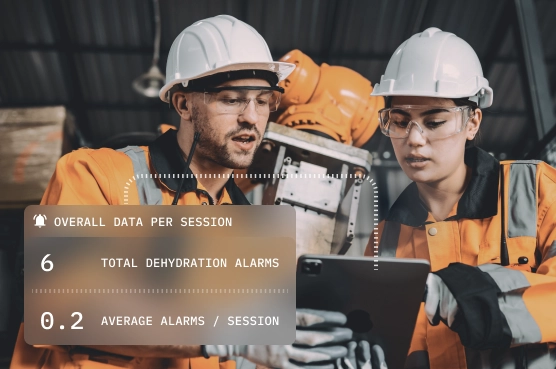
.
Safe and Secure
Connected Hydration is certified CLASS I, DIV 2, GROUPS A, B, C, AND D, T6; CLASS I, ZONE 2, AEX IC IIC T6 GC. Epicore Biosystems is certified for SOC2 Type 2, demonstrating user data protection, integrity, security and confidentiality.

We’re honored to be recognized by



Select Publications

Continuous personal monitoring and personalized hydration recommendations with wearable sweat sensors to prevent occupational heat stress
Exposure to extreme heat during physical exertion may impair cognitive and physical abilities commonly known as heat stress. Industrial workers are vulnerable to the effects of extreme heat due to increasing ambient temperatures, tasks with radiant heat exposures,

Connected Wearable Solutions for Construction Workers Amid Elevated Global Temperatures
Increasing industry awareness of heat safety, advocating for regulatory improvements, and implementing next-generation wearable devices, researchers, clinicians, and industry leaders can develop advanced heat safety strategies.
Medical Disclaimer:
Connected Hydration® is not used for any diagnosis, treatment, or monitoring of a patient or for compensation or alleviation of disease, injury or disability. Workers should seek a doctor’s advice before making any medical decisions.
